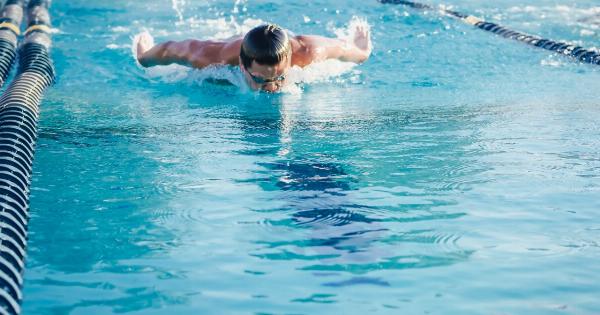Swimming is a popular sport that offers numerous physical and mental health benefits. However, like any physical activity, it also carries the risk of injuries, particularly shoulder injuries.
The repetitive nature of swimming strokes and the high demands placed on the shoulder joint can lead to various shoulder injuries. This article will discuss the diagnosis and treatment of swim-related shoulder injuries, focusing on common types of injuries, their symptoms, diagnostic methods, and available treatment options.
Common Swim-Related Shoulder Injuries
1. Rotator Cuff Tendinitis.
Rotator cuff tendinitis is a common shoulder injury among swimmers. It occurs when the tendons in the rotator cuff become inflamed due to repetitive overhead arm movements.
Swimmers with this injury often experience shoulder pain, weakness, and difficulty with overhead movements.
2. Shoulder Impingement Syndrome.
Shoulder impingement syndrome is another frequent shoulder injury in swimmers. It develops when the rotator cuff tendons become pinched between the shoulder blade and the humerus (upper arm bone).
The symptoms usually include pain, weakness, and limited range of motion.
3. Shoulder Dislocation.
Shoulder dislocation is a severe injury that occurs when the ball-shaped head of the humerus pops out of the shoulder socket.
Swimmers who perform forceful swimming strokes or experience a traumatic accident in the water are at risk of shoulder dislocation. This injury causes immediate and intense pain, swelling, and disfigurement of the shoulder.
4. Labral Tears.
Labral tears involve damage to the labrum, a ring of cartilage that surrounds the shoulder socket. Swimmers may develop labral tears through repetitive motions or sudden trauma to the shoulder.
Symptoms include shoulder instability, popping or clicking sounds, and pain during movement.
5. Biceps Tendinitis.
Swimmers often strain the long head of the biceps tendon, leading to biceps tendinitis. Overuse, improper swimming technique, or sudden increase in training intensity can cause this injury.
Symptoms include pain in the front of the shoulder, weakness when lifting objects, and a popping sensation during arm movements.
Diagnosis of Swim-Related Shoulder Injuries
When a swimmer presents with shoulder pain or dysfunction, a comprehensive evaluation is necessary to determine the exact injury. The diagnosis typically involves the following:.
1. Medical History.
The physician will inquire about the swimmer’s symptoms, the duration of pain, and any previous shoulder injuries. This information helps in identifying patterns and potential causes of the current injury.
2. Physical Examination.
A physical examination involves assessing the shoulder’s range of motion, strength, stability, and any signs of swelling, tenderness, or deformity. Specific tests may be performed to identify the injured structures.
3. Imaging Tests.
Imaging tests, such as X-rays, magnetic resonance imaging (MRI), or ultrasound, may be ordered to visualize the soft tissues, bones, and structures within the shoulder joint.
These tests help in confirming the diagnosis, ruling out other conditions, and assessing the severity of the injury.
Treatment Options for Swim-Related Shoulder Injuries
The treatment approach for swim-related shoulder injuries depends on the type and severity of the injury. The following options are commonly employed:.
1. Rest and Modification of Activities.
Resting the shoulder and avoiding activities that exacerbate the pain can help alleviate symptoms and promote healing. Swimmers may need to modify their strokes or training techniques to reduce stress on the shoulder joint.
2. Physical Therapy.
Physical therapy plays a crucial role in rehabilitating swim-related shoulder injuries. Therapists employ various techniques to reduce pain and inflammation, improve shoulder flexibility and strength, and correct any underlying biomechanical issues.
3. Medications.
Nonsteroidal anti-inflammatory drugs (NSAIDs) may be recommended to relieve pain and reduce inflammation in the affected shoulder. However, long-term use of these medications should be avoided.
4. Corticosteroid Injections.
In cases of severe pain or inflammation, a physician may administer corticosteroid injections directly into the shoulder joint. These injections help reduce swelling and pain, providing temporary relief.
5. Surgical Intervention.
If conservative treatments fail to alleviate symptoms, surgical intervention may be considered. The specific surgical procedure depends on the type and severity of the shoulder injury.
Common surgical options include arthroscopy, rotator cuff repair, labral repair, or shoulder stabilization procedures.
Prevention and Rehabilitation Strategies
Swimming enthusiasts can reduce the risk of shoulder injuries by following these preventive measures and rehabilitation strategies:.
1. Warm-up and Stretching.
Proper warm-up exercises and stretching routines can prepare the shoulder muscles for intense activity and improve their flexibility, reducing the risk of injury.
2. Correct Technique.
Swimmers should learn and practice proper swimming techniques to ensure optimal shoulder mechanics and minimize stress on the shoulder joint.
3. Gradual Training Progression.
Avoid sudden increases in training intensity or duration, as this can overload the shoulder muscles and lead to injuries. Gradual progression allows the muscles and tendons to adapt and become stronger.
4. Cross-training.
Engaging in activities that strengthen the muscles surrounding the shoulder joint, such as resistance training and yoga, can help improve shoulder stability and prevent imbalances.
5. Posture and Body Alignment.
Maintaining good posture and proper body alignment during swimming strokes can minimize excessive strain on the shoulder joint.
Conclusion
Swim-related shoulder injuries are common among swimmers due to the repetitive nature of the sport and the demands placed on the shoulder joint.
Prompt diagnosis and appropriate treatment are essential for successful recovery and return to swimming activities. By understanding the common types of shoulder injuries, their symptoms, and implementing preventive measures, swimmers can minimize the risk of developing shoulder injuries and enjoy a safe and fulfilling swimming experience.

























